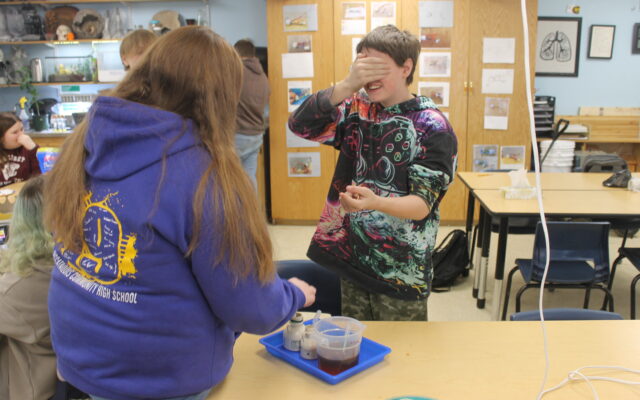
SAD 4 students make weather-proof homes and maple syrup
GUILFORD — Weather in Maine can vary with severe conditions possible. Snow, heavy wind, flooding and even a rare but not impossible tornado can damage or destroy homes. How these weather systems can be mitigated to protect houses and property was something Piscataquis County Elementary School third-graders thought about and tested in a recent hands-on weather unit.
Using experiential learning concepts from the professional development opportunities shared by PCES math coach Sarah Curtis, grade 3 teachers Holly Bell and Alicia Laweryson designed a unit that combines extreme weather and engineering design. Students worked together to make what they believed would be disaster-proof structures and tested these models with replica conditions. Students overcame design challenges and revised their projects based on the simulation results.
Third-grader Nathan Chambers said his group built a tall structure to survive a winter in Maine.
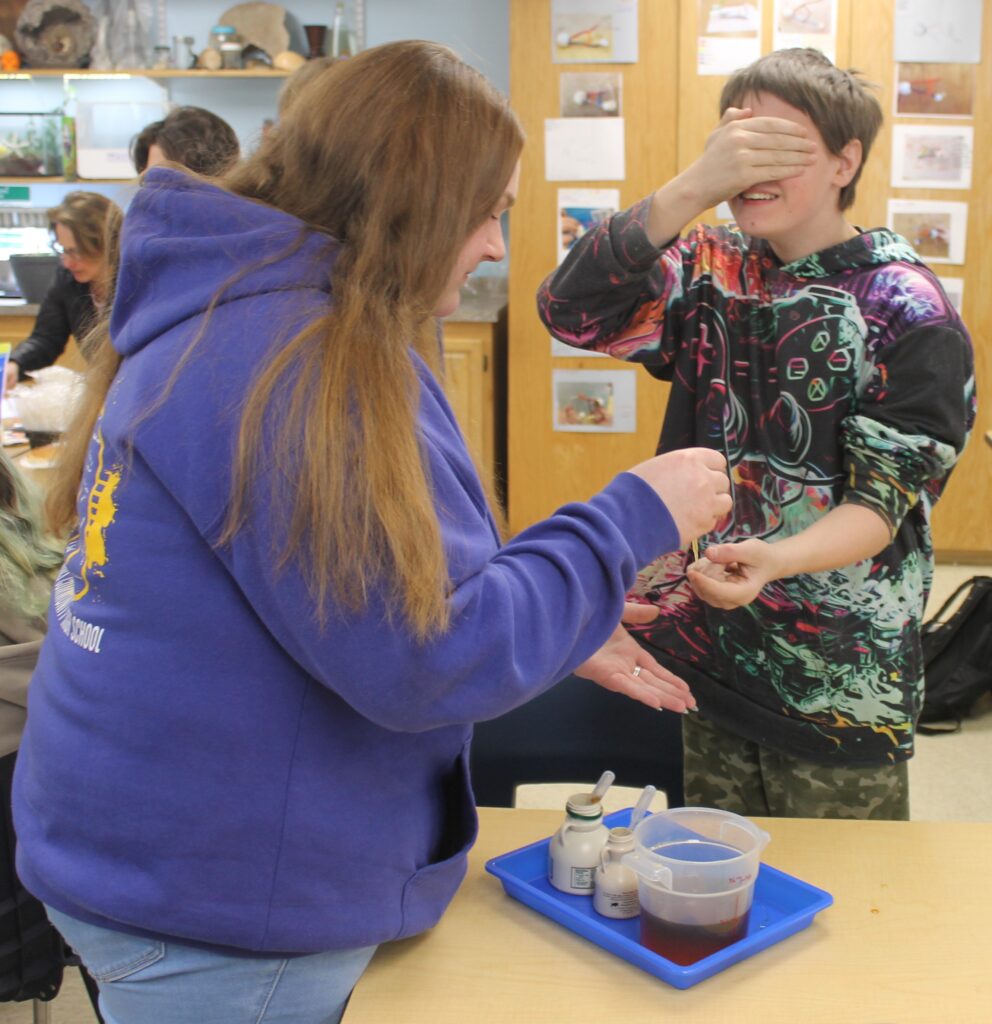
BLIND TASTE TEST – PCSS eighth-grader Hunter Andrews has a dab of syrup placed on his finger by ed tech Alison Quimby. Students at the Guilford secondary school took part in a taste test to see if they could differentiate between the syrup their classes made and which options came from some local maple producers.
“I would rather have made it small because we had a blizzard,” he said. With a leaf blower replicating the strong winds and saw dust standing in for snow, students brought their home models outside for this testing.
“Layers came down and there was a bunch of snow coming on top of it,” Chambers said, saying the flat roof design was not ideal. “I wish we had a flood instead of a blizzard,” he added.
After seeing what happened, the group adjusted by using clay as a base and sticks to hold up the roof along with bubble wrap for additional protection. “We put in a triangle roof so snow would slide off instead of stay put,” Chamber said, saying extra tape was also beneficial.
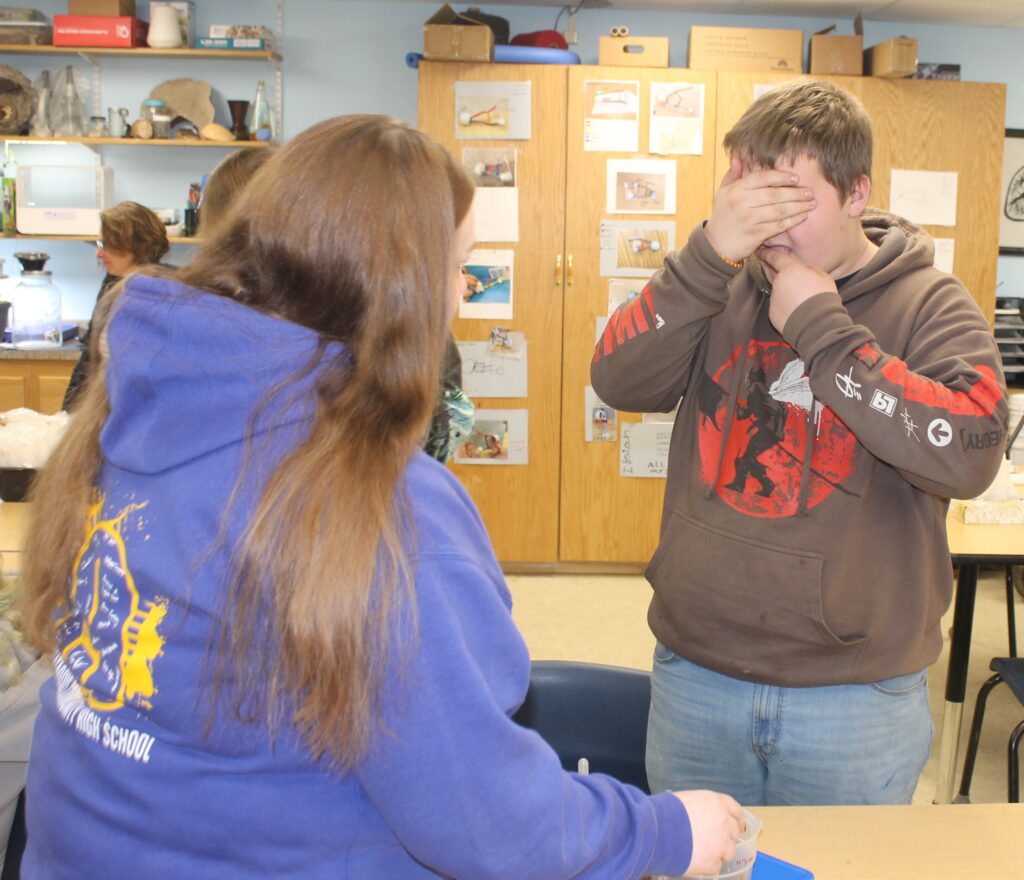
MILDY STICKY SITUATION – Eighth-grader Colby Avellar covers his eyes to guess which maple syrup was made by PCSS students and which came from local maple producers, as ed tech Alison Quimby placed a couple of drops at a time on students’ fingers.
Aubri Gray Rattigan said some houses were placed in a kiddie pool with water poured from a flower pot for rain and the collected water flooding the homes to see how much could be sustained.
“I think in any home they should put rocks on it so it doesn’t float away,” Brinley Bradford said.
Bell said the students are now studying Native Americans, including Haudenosauncee the “People of the Longhouse” as the six nations of the Iroquois Confederacy referred to themselves as. She said this group learned to build their homes to be sustainable in all the weather conditions they faced.
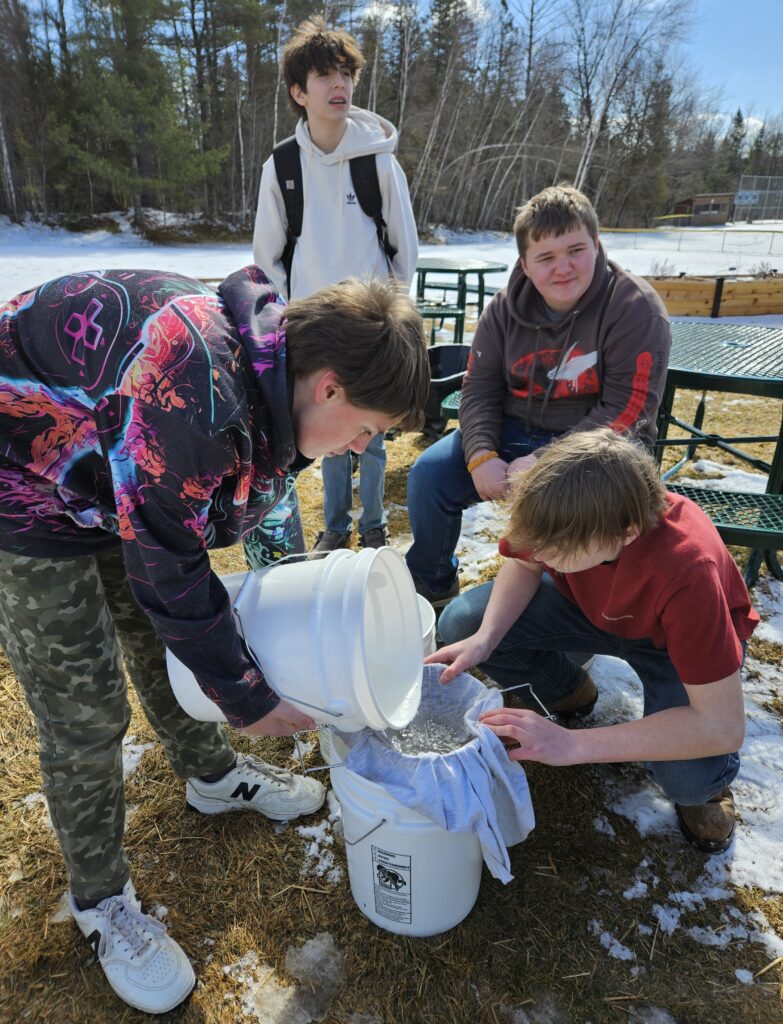
HOMEGROWN — PCSS middle school students learned about maple syrup making during a recent unit by collecting sap from trees on campus which was then made into syrup.
Next door in Laweryson’s classroom, Emma Yandow said her group’s home “was made mostly out of cardboard and tinfoil.”
“The house blew away because it was too light, we should have made it with dirt and rocks,” she said.
Marley Brown said her dwelling was hit by a tornado aka leaf blower. “Our house was made mostly of popsicle sticks and tinfoil and lots of tape. At the end we put on three sandbags full of rocks on the roof.”
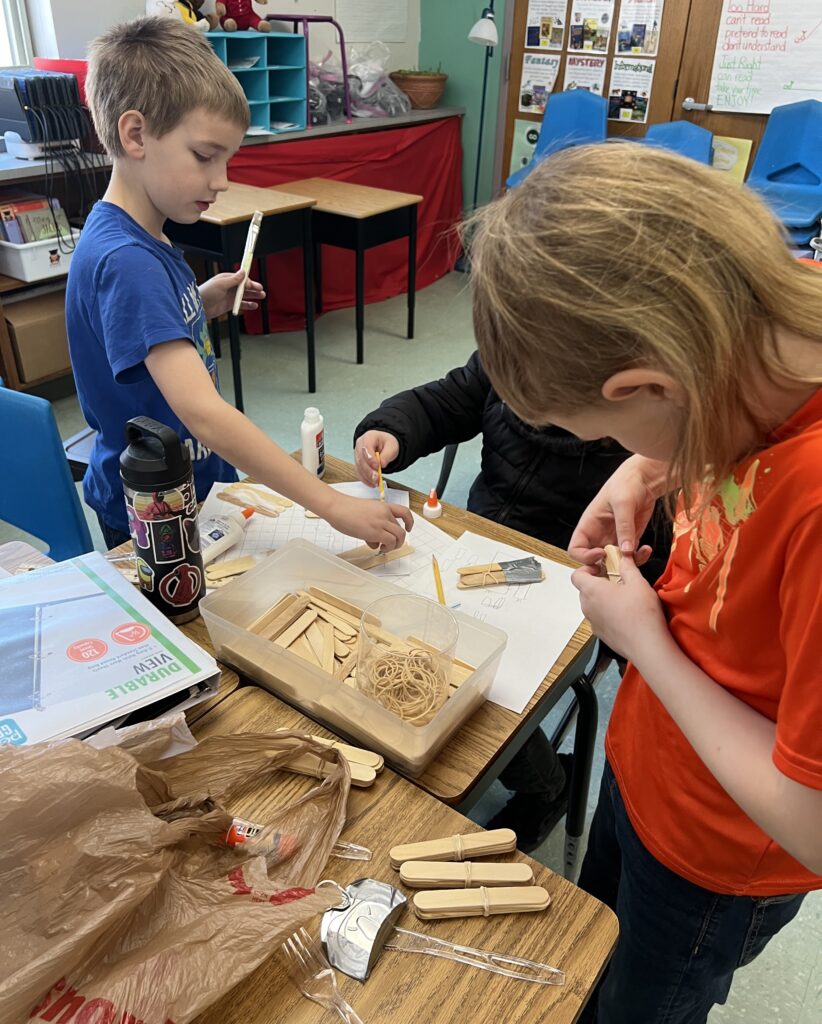
HOME WORK — PCES third-graders were tasked with designing homes that could withstand harsh weather conditions, such as blizzards and heavy rain.
Leah Snyder said her group’s home was flooded in the kiddie pool after duct tape and clay was put around a box. “It didn’t fall, the clay kept it up.”
Across campus middle school students learned about the maple syrup making process in grade 7-8 teacher Emily Anderson’s classes.
The students tapped four trees outside the building with the syrup dripping into buckets they placed. The buckets were contributed by Tom Goulette and Alex Ruksznis worked with the middle-schoolers during the unit.
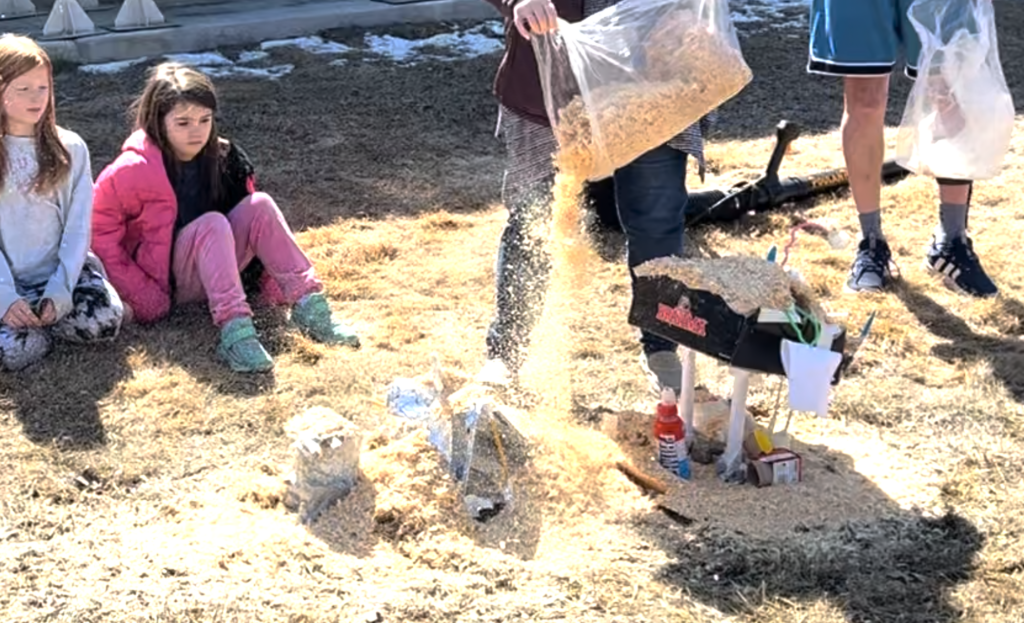
LET IT SNOW — Sawdust stood in for heavy snow to test replica homes designed and built by PCES third-graders to stand up to extreme weather.
The ideal temperature for the process is about 40 degrees during the day and freezing at night, students learned. Should they collect syrup again, then they would aim to be more in the sun for a more consistent flow as well as starting small should they pursue their own maple operation.
Anderson made pancakes for the students and they could top the flapjacks with their own syrup or products from local producers. Students could also take part in a blind taste test as ed tech Alison Quimby put a dap of several types on their fingers and they tried to guess which was theirs and which came from elsewhere.
Curtis said the two units are designed to increase engagement and connect students with real world experiences and people in the community. By building their own homes and making maple syrup themselves students can think about aspirations for what they can accomplish in their adult lives.
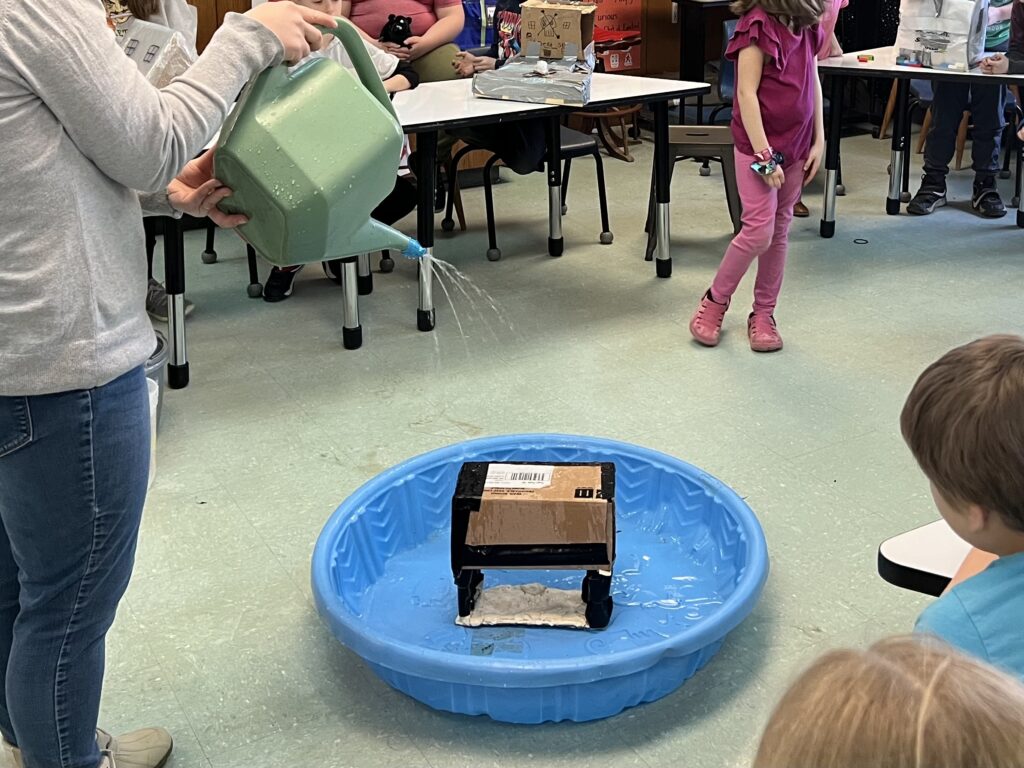
WHEN IT RAINS IT POURS — A PCES grade 3 home is tested to see if it can withstand heavy rain.